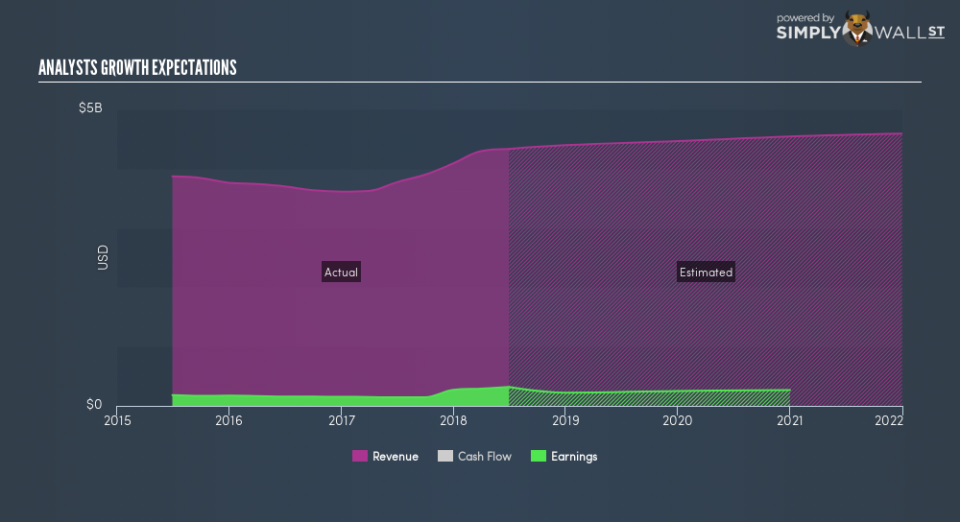Are Insiders Pessimistic About Silgan Holdings Inc (NASDAQ:SLGN) Stock?

Silgan Holdings Inc., together with its subsidiaries, manufactures and sells rigid packaging for consumer goods products worldwide. Silgan Holdings is one of United States’s large-cap stocks that saw some insider selling over the past three months, with insiders divesting from 25.84k shares during this period. It is widely considered that insider selling stock in their own companies is potentially a bearish signal. A two-decade research published in The MIT Press (1998) showed that stocks following insider selling declined 2.7% relative to the market. However, these signals may not be enough to gain conviction on whether to divest. I’ve analysed two possible reasons driving the insiders’ decision to reduce their investment of late.
Check out our latest analysis for Silgan Holdings
Who Are Selling Their Shares?
More shares have been sold than bought by Silgan Holdings’s insiders in the past three months. In total, individual insiders own over 33.08 million shares in the business, which makes up around 29.9% of total shares outstanding.
Insiders that have recently sold some of their shares include Robert Lewis (management) , Anthony Andreacchi (management) and John Alden (board member) .
Is Future Growth Outlook As Bearish?
Analysts’ expectations for earnings over the next 3 years of -17.8% provides negative outlook for the business, consistent with the signal company insiders are sending with their net selling activity.
Digging deeper into the line items, Silgan Holdings is expected to experience a rather subdued top-line growth over the next year, and along with high cost growth, is expected to contribute to a highly negative expected earnings growth. Without proper cost controls, earnings could continue to exhibit large negative growth which is unmaintainable.
Selling activities by insiders seem to be consistent with this pessimistic future prospect. Or they may simply deem the current share price is well-above its intrinsic value, providing an opportune time to sell.
Can Share Price Volatility Explain The Sell?
Another factor we should consider is whether the timing of these insider transactions coincide with any significant share price movements. Volatility provides an opportunity to trade on market inefficiencies when the stock is under-priced compared to the stock’s intrinsic value.
In the past three months, Silgan Holdings’s share price reached a high of $28.39 and a low of $26.41. This suggests a trivial share price movement, with a change of 7.5%.
Potentially, insider transactions are not share price related but may be due to their belief on what will happen to the company in the future or simply just personal cash and diversification needs.
Next Steps:
Silgan Holdings’s insiders’ meaningful divestments tells us that their shares have recently fallen out of favour, which is consistent with the significant expected earnings growth, though share price volatility was perhaps inconsequential to cash in on any mispricing. But we must also be aware that insiders divesting may not actually be based their views on the company’s outlook. Moreover, while insider selling can be a useful prompt, following the lead of an insider, however, will never replace diligent research. there are two essential aspects you should further research:
Financial Health: Does Silgan Holdings have a healthy balance sheet? Take a look at our free balance sheet analysis with six simple checks on key factors like leverage and risk.
Other High Quality Alternatives : Are there other high quality stocks you could be holding instead of Silgan Holdings? Explore our interactive list of high quality stocks to get an idea of what else is out there you may be missing!
NB: Figures in this article are calculated using data from the last twelve months, which refer to the 12-month period ending on the last date of the month the financial statement is dated. This may not be consistent with full year annual report figures.
To help readers see past the short term volatility of the financial market, we aim to bring you a long-term focused research analysis purely driven by fundamental data. Note that our analysis does not factor in the latest price-sensitive company announcements.
The author is an independent contributor and at the time of publication had no position in the stocks mentioned. For errors that warrant correction please contact the editor at editorial-team@simplywallst.com.


